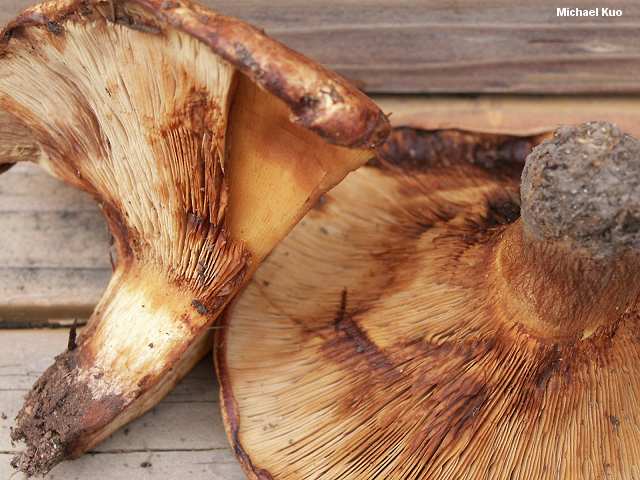I found these a few years ago which were identified (by others on the foray) as galerina marginata. If anyone disagrees with the ID, let me know and I'll delete.
Garry

Garry
I found these a few years ago which were identified (by others on the foray) as galerina marginata. If anyone disagrees with the ID, let me know and I'll delete.
Garry

Your picture:

Paxillus involutus:

Appalachian chanterelle:

The person in question believed he was posting pictures of Appalachian Chanterelles (which don't grow in the UK, but are pretty similar to our Chanterelles). And he'd clearly been eating them for a while.
In fairness, Mungo does list his location as Toronto, Canada and is quite close to the Appalachian Mountains. But it's very useful to have a reminder that, when travelling, you should be even more wary for misidentification and double up the checks.
You have obviously not fried up a winter chanterelles or ceps in butter and served them on some wholemeal bread or bulked up a hearty beef stew with a brown birch bolete, or even fried up some puffballs and served them with crispy bacon and a runny poached egg and toast. Mmmm, its making my mouth water just thinking about the flavours.
So basically it's not worth risking eating wild mushrooms your better off giving them a wide birth especially in a survival situation due to there low nutrition it's just not worth risking it.
lol I know, me too. I'm way over cautious of picking the wrong types. All of the ones I leave alone are either one I can say hand on heart are either poisonous or inedible, the rest are ones I cannot 100% identify so I'm not going to take a chance. I only need that one small niggle like it doesn't smell quite right or the texture seems wrong or something looks out of place and I walk away to forage another day. Its common sense really.
